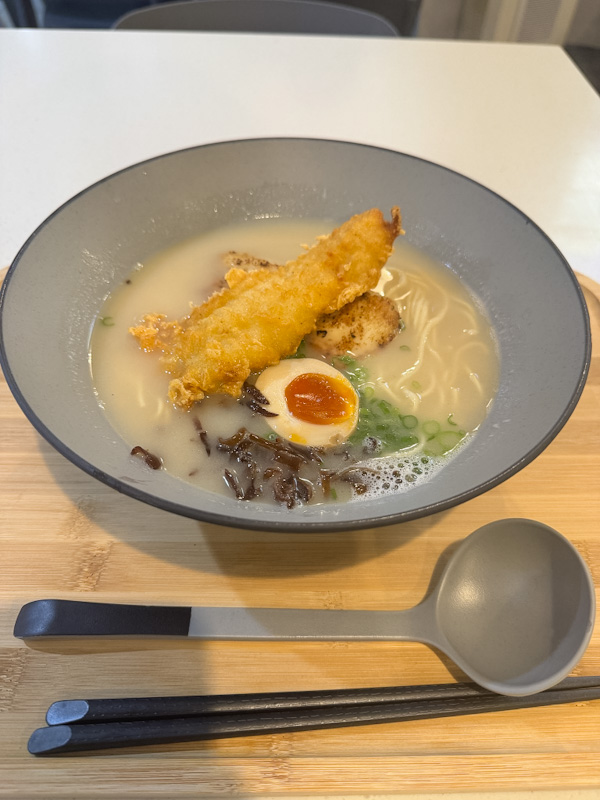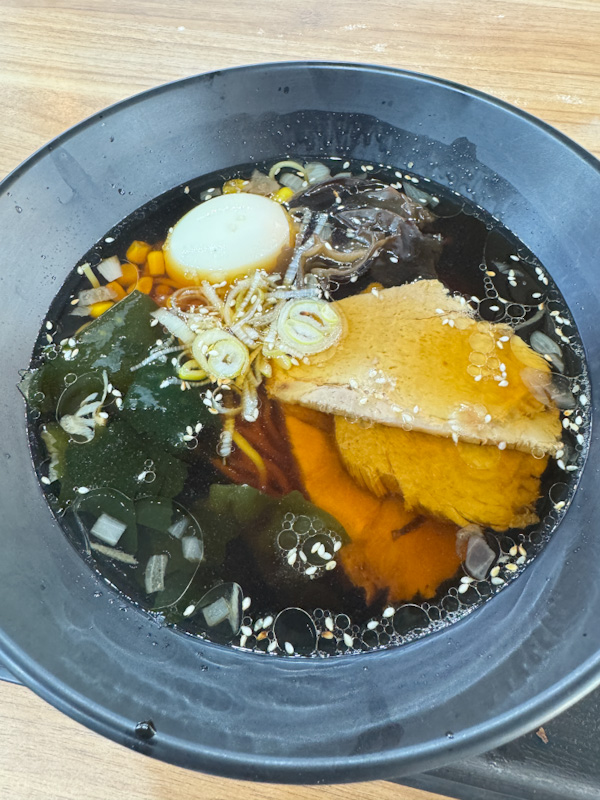WHAT WE ATE
- Sushiro Singapore × Kajiken: Taiwan Mazesoba Collab (Limited-Time), 65/100
- Tonkotsu Ramen, 15/100
In those moments when circumstances demanded it, we couldn’t resist the allure of indulging in our favorite comfort food – ramen. We’re sure many of you can relate to the comforting sensation of a steaming bowl of noodles when the need arises. Join us as we share our personal experience of finding solace in a delightful ramen adventure. 😉
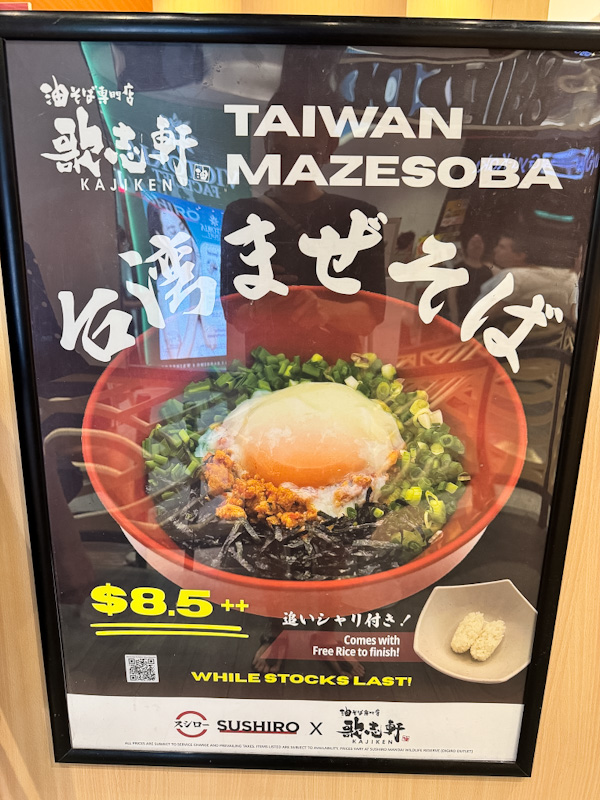

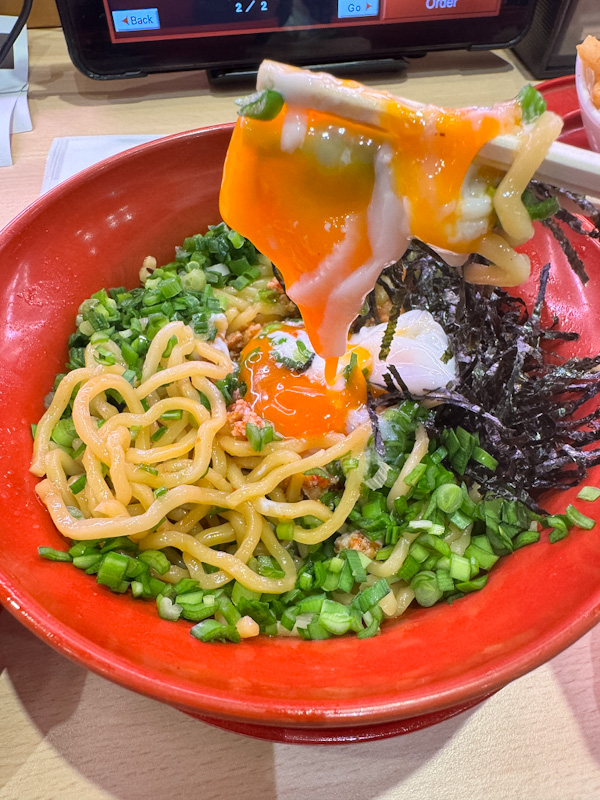
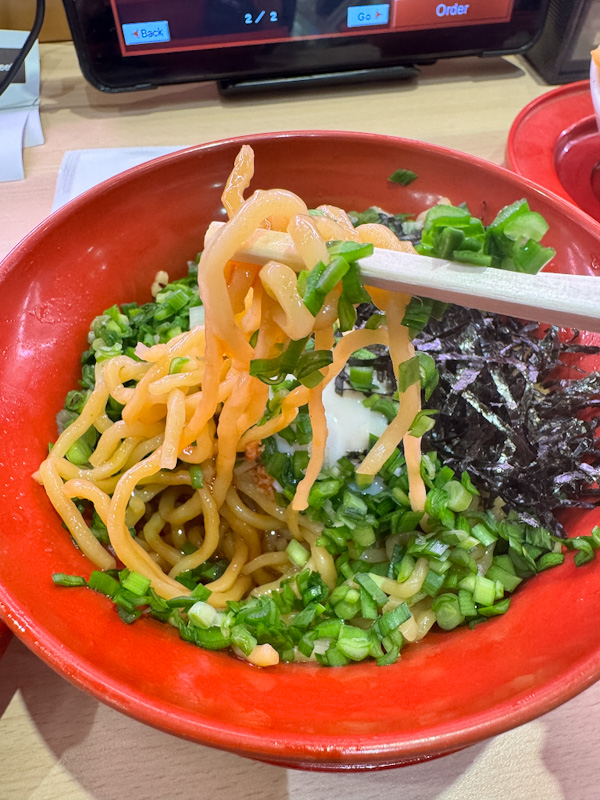
Taiwan Mazesoba (Sushiro × Kajiken Collaboration): 65/100
Sushiro Singapore has partnered with Kajiken—the mazesoba specialist known for its signature “Taiwan Mazesoba (Nagoya-style)”—to bring a dry ramen crossover into the kaiten-sushi world. The tie-up is rolling out across all Sushiro outlets in Singapore as a limited run, with Sushiro’s official channels pegging the launch from 29 Oct 2025 and available while stocks last. Think of it as a lane switch: the country’s busiest conveyor belts meeting one of Singapore’s best-known mazesoba names, without giving away the playbook just yet.
For context, Kajiken helped popularise mazesoba here—dry, sauce-forward ramen built for mixing—long before this collaboration, and “Taiwan Mazesoba” remains its calling card. Sushiro, meanwhile, has been on a streak of culture-driven limited menus and brand partnerships, so this ramen crossover fits their pattern of time-boxed, nationwide releases. If you follow mazesoba in Singapore or chase Sushiro’s seasonal drops, this one’s worth tracking before it rotates out.
Noodle: 15/35
Medium-thick and curly, the noodles here lean slightly soft, closer to what you’d expect from a ramen base rather than a true mazesoba. The chew is missing that signature mochi-mochi bounce that usually gives dry ramen its grip. On the plus side, the noodles carry a clean wheat flavour and avoid any hint of that alkaline sharpness that can linger in less-balanced doughs. Pleasant enough, but not transformative.
Sauce: 25/35
The flavour builds in distinct stages. The first hit lands with a sharp saline kick, quickly rounded out by the yolky umami of the onsen egg that ties the sauce together. As you keep mixing, a subtle tang creeps in, giving the bowl a bright, almost refreshing undercurrent before it closes with a slow, lingering burn. It’s not overly complex, but the balance between salt, fat, and spice keeps it engaging through the last mouthful.
Meat: 15/20
Kajiken’s signature minced meat plays the familiar role here: finely ground, tender, and intensely seasoned. The salt level runs high, but it works—the meat has that savoury, slightly oily addictiveness that makes it easy to overmix into the noodles. It’s not the star of the show, but it’s the flavour backbone that defines the bowl.
Other Toppings: 10/10
A generous scatter of negi keeps the mix fresh, though its bite feels muted compared to Kajiken’s usual sharpness. The seaweed adds a deep, marine umami that anchors the otherwise salty base. What’s most intriguing, though, is the closing act: a scoop of sushi rice offered to soak up the leftover sauce. The vinegar in the rice lifts the final bites, adding a faint, measured sourness that cuts neatly through the residual spice—a thoughtful, almost palate-resetting finish.
Summary
Sushiro’s collaboration with Kajiken delivers an interesting cultural crossover but not quite a textural triumph. The flavour is recognisably Kajiken—salty, umami-driven, and gently spicy—but the noodles lean softer than ideal, which mutes the usual punchy, mix-heavy satisfaction of mazesoba. Still, there’s merit in the concept: the sauce carries good depth, the toppings are well-composed, and that sushi rice finale shows thoughtful intent. Overall, it’s a pleasant introduction to mazesoba for the uninitiated, though seasoned fans may find it a toned-down rendition rather than a full expression of Kajiken’s signature bowl.
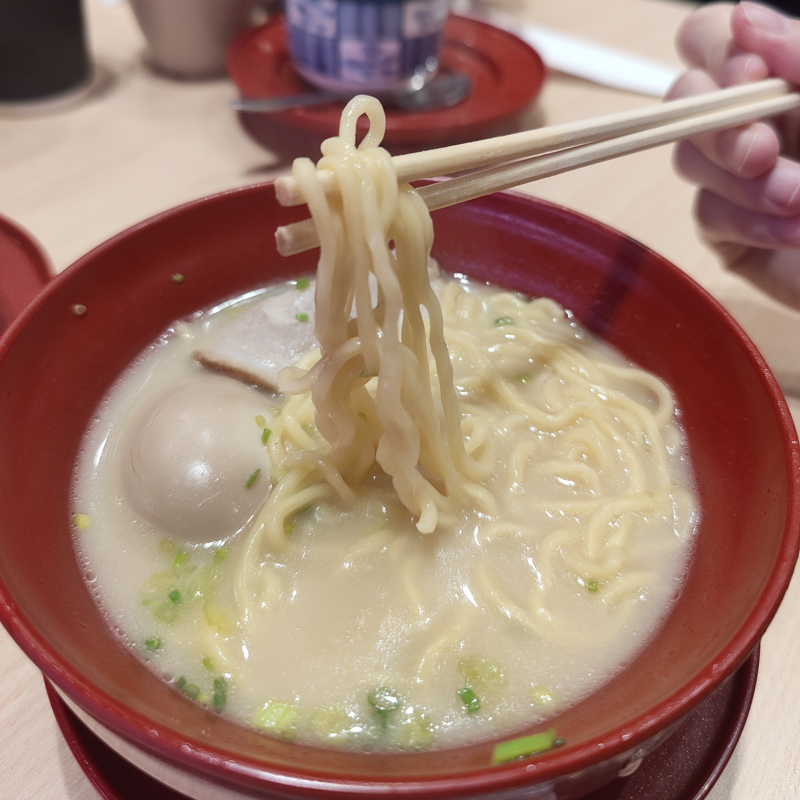
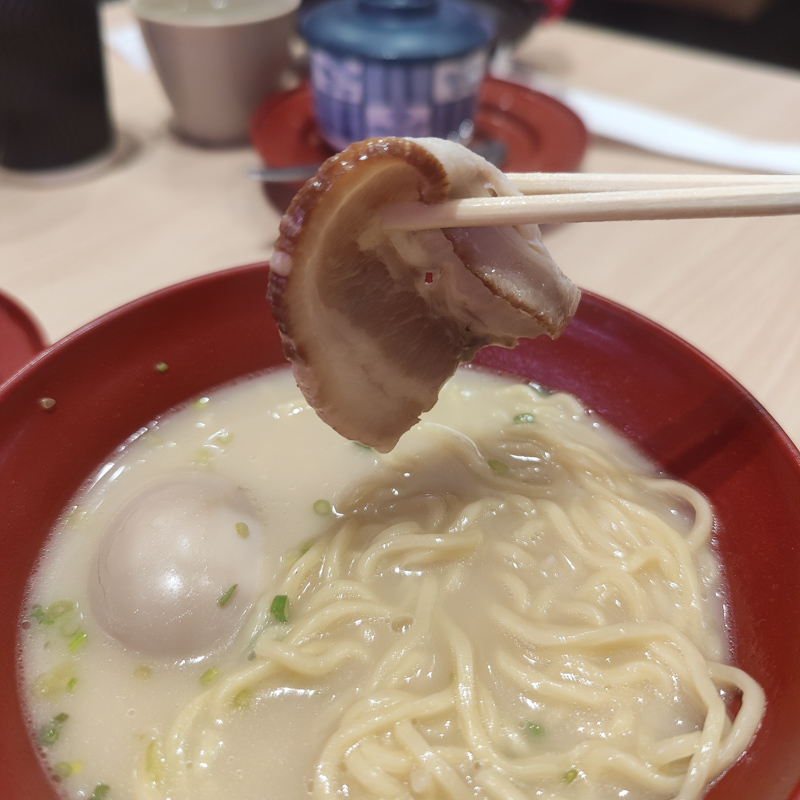
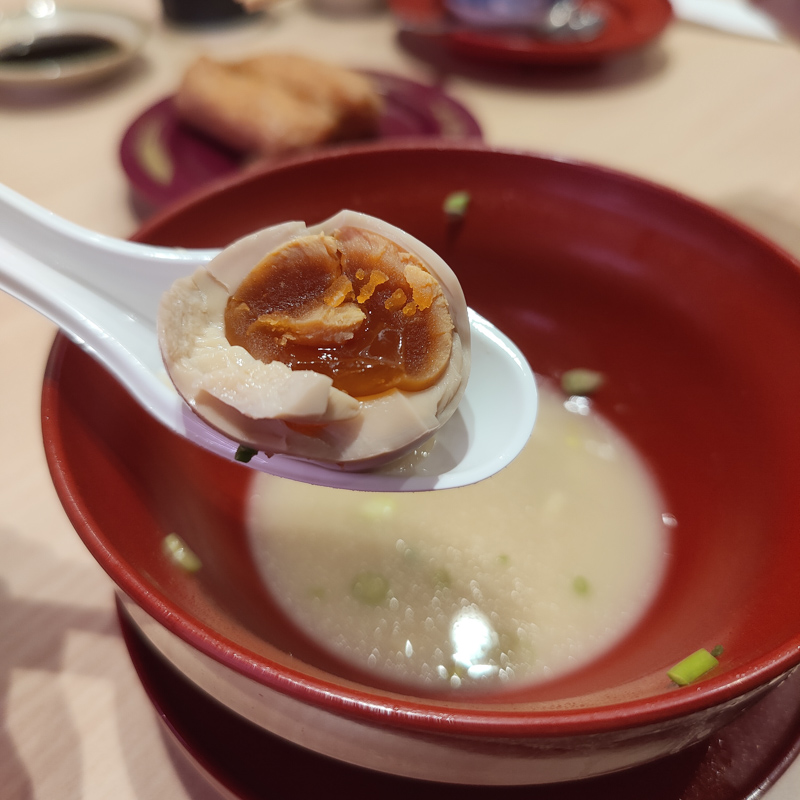
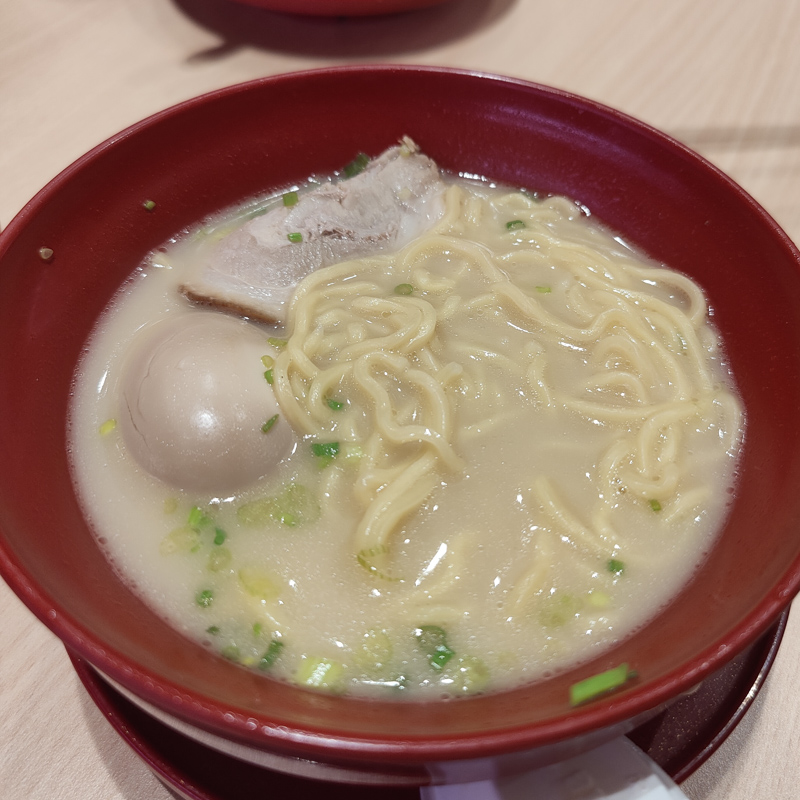
Tonkotsu Ramen: 15/100
Noodle: 5/35
The noodles presented a departure from the traditional Tonkotsu ramen style. While we understand that this establishment caters to various ramen options, the chosen noodles lacked the desired chewiness and firmness, reminiscent of instant noodles rather than authentic handmade strands. It fell short of delivering the QQ texture that ramen enthusiasts crave, leaving us wanting more from this crucial element.
Soup: 5/35
As anticipated, the soup failed to capture the essence of a classic Tonkotsu broth. Its watery consistency and lack of richness left much to be desired. However, taste-wise, it managed to salvage some redeeming qualities, preventing it from being deemed completely inedible.
Meat: 0/20
The meat component proved to be a letdown, with a tough texture and an overpowering gaminess that lingered on the palate. It lacked the desired tenderness and succulence that elevates a bowl of Tonkotsu ramen to new heights. The choice of pork and its preparation fell short of expectations, leaving us yearning for a more enjoyable meaty addition.
Other Toppings: 5/10
The half-cooked gooey egg, although seemingly machine-made, managed to deliver a decent taste and added a hint of satisfaction to the overall dish. Accompanied by Negi, the toppings were limited, lacking the additional layers and variety that could have elevated the ramen experience.
Summary
In conclusion, this Tonkotsu ramen offering falls short of the mark, ranking neither as the best nor the worst in our culinary adventures. While it may fill a temporary void, it fails to impress in terms of authenticity and overall quality. However, it’s worth noting that the establishment shines in its variety of options and the freshness of its sushi staples. For those seeking a satisfying ramen experience, this particular venue might not be the top choice.
DISCLAIMER
One man’s meat is another man’s poison.
Find out more about our palettes and how we evaluate our ramen here. 😉

